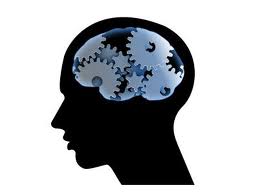
Free Psychology Essay
Understanding interpersonal behaviour.
How successful have social psychologists been in identifying the causes of human anti-social behaviour?
Before we start exploration of antisocial behaviour, it is deemed necessary that we allow a clear definition to be made. As discussed within the Criminal Justice Act, antisocial behaviour is known as ‘harassment, alarm or distress to one of more persons not of the same household' (Cheney et al. 2001). In regards to how successful psychologists have been in identifying the causes of human antisocial behaviour, has quite a dependence on the body of thinking in which one accepts when regarding the question. There appears to be adequate literature which supports developmental and genetic influences and therefore is suggestive that psychologists have in fact been successful in identifying causes of antisocial behaviour.
A developmental model of antisocial behaviour is herein outlined. In 1989 it was proposed that the aetiology of antisocial behaviour amongst individuals develops during adolescence and earlier childhood (Patterson et al. 1989, p.329). It was suggested that a route to common adolescence and young adulthood delinquency was preset by a variety of events. There is much weight placed amongst ineffective parenting with regards to childhood conduct disorders alongside contextual variables within the family dynamics. This in turn is said to lead to academic failure alongside an inability to integrate with peers. These failures are said to link with an increased likelihood of a development of a mood disorder and deviant behaviours within deviant social groups. It is assumed therefore, that children who follow such delinquent paths towards adulthood are at risk of engaging in antisocial behaviour. Of course, on paper this is simple and chronological in understanding. However, social interaction and parental abilities cannot be indicated as predominant causes for antisocial behaviour in all cases. There is an interaction between many elements that may lead an individual to become primarily engaged in antisocial behaviour. From a criminological point of view, antisocial behaviour can be seen as part of the positivist approach. Positivist approaches regard antisocial behaviour to be part of a selection of individual variables that predispose individuals to antisocial behaviour. A few examples of such behaviours as listed by Fariña et al. (2008, p.79) are; hyperactivity, impulsiveness, poor self regulating skills and low intelligence. Much of this in turn can be looked at with regards to faulty parenting skills as we know all too well the ways in which parental skills affect behaviour. But, furthermore, this is also reductionist in approach and disregards many other elements of antisocial behaviour.
Science has well established that adults, who have had normal development in regards to social behaviour, often display a change in behaviour if particular sections of the prefrontal cortex are impaired. This is due to the fact that the prefrontal cortex has significant implication with regards to decision-making and therefore can disrupt social behaviour. Patients however, are able to maintain intellectual abilities alongside factual knowledge of social conventions and moral rules which makes their behaviour all the more untoward (Anderson et al. 1999, p.102). Damage to the prefrontal cortex in childhood should be examined at this point to note whether similar issues with antisocial behaviour occur. By investigating two individuals who experience prefrontal damaged before the age of 16 months, Anderson at al. (Ibid, p.102) were able to show that early-onset lesions were very similar to damage received an adult hood, and therefore behaviour was similar. The early-onset patients demonstrated inadequate emotional responses to social situations alongside their behaviour. Furthermore, their moral understanding of situations was also impaired. A predominant finding was that their inadequacies in regards to their behaviour started in childhood and continued through to adulthood. This evidence has high weighting in regards to neurological aspect antisocial behaviour. These individuals were unable to manage their impulsiveness or their susceptibility to environmental cues and often left them at risk of violating others.
Environment is also seen to have an effect on individuals' behaviour. Millie (2009, p.7) looked at a variety of different components through focus groups and interviews which discussed elements which contribute towards antisocial behaviour. Environments that were not ‘clean', were stressed to have a detrimental effect on the behaviour of its inhabitants. Individuals involved in antisocial behaviour made various comments to the levels of cleanliness in the environment in which they lived. Some individuals make referrals to rubbish on the floor and the fact that London was the dirtiest city in the UK. How this relates to an understanding of antisocial behaviour is difficult with regards to cause and effect. Which element came first, the antisocial behaviour or the uncleanliness of the environment? It could be assumed that a dirty environment causes individuals to have less respect for their community and therefore engage in antisocial behaviour through disrespect or even boredom. Drug use was also highlighted as a factor in which the inhabitants felt had contributed to antisocial acts (Ibid, p.8). Interestingly, Raine et al. (2003, p.1627) were able to show that their own particular research was able to add to an ever increasing body of knowledge that suggests that an enriched and stimulating environment has beneficial psychological and behavioural outcomes. If we relate this to the aforementioned environmental cues, then it can be suggested that the dirty environment within particular suburbs was able to be described as a contributing factor to antisocial behaviour. Furthermore, the research by Raine et al (Ibid, p.1631) was able to show that educational, nutritional and physical exercise enrichment for children through the ages of 3 to 5 years were associated with lower scores on schizotypal personality and antisocial behaviour when measured 14 to 20 years later. Enrichment intervention tended to be much higher children who had been noted to be undernourished at the ages of 3 or under and this had a major effect for individuals who demonstrated schizotypal personality's at the age of 17. The research of Raine clearly shows an intervention/environmental component to the development of antisocial behaviour. However, it is not only the environment that can have a major impact on the development of personality disorders; there is much evidence to suggest that genetics pay a key part also.
Research from the modern era has looked closely at the genetic links by focusing on family and the environment. The role of the gene-environment (G x E) is a methodological challenge to study (Moffitt 2005, p.544). This is due to the many different specifics that are needed whilst adopting research within the natural environment and this is very particular when studying G x E. Some of the primary research for G x E came from individuals who had been adopted. These studies were able to show that when studying the effects of genetics with the environment it was much higher than when they were to be tested alone G vs. E. Cadoret, Cain, & Crowe, (1983, p.302) found that of 500 adopted individuals, there were significant findings in regards to antisocial behaviour when they had experienced negative situation of variables both from their environment and if their mother also suffered from a type of personality disorder. These were highly significant findings. Further research by Cadoret, Yates, Troughton, Woodworth and Stewart, (1995) noted that amongst 200 adopted individuals there were predisposing factors within childhood and adolescence antisocial behaviour and it was more likely that an individual would have an antisocial behaviour disorder if this was positively correlated with a natural parent with another personality disorder. However, adoption studies must consider the fact that adoption in itself causes an upheaval within the individual, and that separation from the natural mother may in itself, be a factor which contributes towards antisocial behaviour.
A paper of this size does not allow for full appreciation of psychologists understanding of the causes which have been identified in being an indicative factor in human antisocial behaviour. This paper has examined the developmental model and the way that it explains antisocial behaviour with primary emphasis placed upon parenting. Although it is clear that parenting skills (or lack of) are primary indicators in the causes of antisocial behaviour. This paper has also looked at damage to the prefrontal cortex in adults which has been linked to antisocial behaviour. This paper also showed that early damage before an individual reaches 16 months of age is also a predominant factor for an adolescent who demonstrates factors of antisocial behaviour. The paper has also considered the environmental influence and how factors such as levels of uncleanliness can contribute to antisocial acts. Although this paper was only able to touch lightly upon the factors which are known to contribute to antisocial behaviour, it has been deemed that psychologists have been successful in identifying predominant factors that link to antisocial behaviour.
References:
Anderson, S.W. et al., 1999. Impairment of social and moral behavior related to early damage in human prefrontal cortex. Nature Neuroscience, 2(11), pp.1032-1037.
Cadoret, R. J., Cain, C. A., & Crowe, R. R. (1983). Evidence for gene– environment interaction in the development of adolescent antisocial behavior. Behavior Genetics, 13, 301–310.
Cadoret, R. J., Yates, W. R., Troughton, E., Woodworth, G., & Stewart, M. A. (1995). Genetic– environmental interaction in the genesis of aggressivity and conduct disorders. Archives of General Psychiatry, 52, 916–924.
Cheney, D. et al., 2001. Criminal Justice and the Human Rights Act 1998. , 2nd Edition. Available at: http://kar.kent.ac.uk/1816/ [Accessed December 8, 2011].
Fariña, F., Arce, R. & Novo, M., 2008. Neighborhood and community factors: effects on deviant behavior and social competence. Spanish Journal of Psychology, 11(1), pp.78 - 84.
Millie, A., 2009. Anti-Social Behaviour. Available at: http://eprints.gla.ac.uk/38463/ [Accessed December 8, 2011].
Moffitt, T.E., 2005. The New Look of Behavioral Genetics in Developmental Psychopathology: Gene-Environment Interplay in Antisocial Behaviors. Psychological Bulletin, 131(4), pp.533-554.
Patterson, G.R., DeBaryshe, B.D. & Ramsey, E., 1989. A Developmental Perspective on Antisocial Behavior. American Psychologist, 44(2), pp.329-335.
Raine, A. et al., 2003. Effects of environmental enrichment at ages 3-5 years of schizotypal personality and antisocial behavior at ages 17 and 23 years. American Journal of Psychiatry, 160(9), pp.1627-1635.
Are you struggling with the perfect essay? Academic Sciences is able to provide custom essays and model answers which can help you manage your essay writing and get the grade you want. We have a variety of solutions available to you to suit your academic level, time frame and budget. Have a look through our academic guides and if you are still struggling, consider giving us a call or placing an order for an essay on-line.
